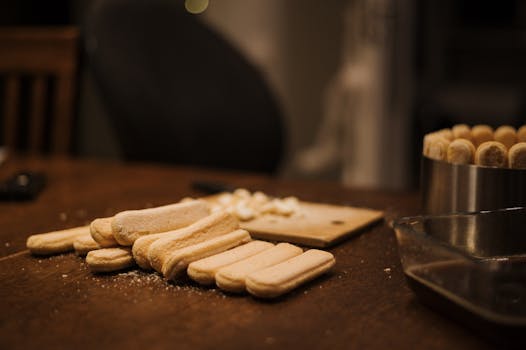As an affiliate, I earn from qualifying purchases, but this doesn't affect the reviews or recommendations—your trust is important to me!
Build Your Own Solar Oven: A Fun STEM Experiment

Today, We're Making:
- - Solar Oven STEM Experiment
- - DIY Sundial Project: In this project, kids can create their own sundial using simple materials like a flat piece of wood, a pencil, and a marker. They would learn about the rotation of the Earth, how our time zones work.
Renewable Energy and DIY Science Experiments
Are you curious about renewable energy, passionate about fun DIY Science Experiments, or simply on the hunt for innovative STEM project ideas? Well, put away your fancy, expensive science kits because you're about to embark on an exciting journey powered by the sun!
Welcome to the World of Homemade Solar Oven STEM Experiments
Welcome to the intriguing world of homemade Solar Oven STEM Experiments - a fascinating hybrid of science, cooking, and energy conservation. This blog post will guide you through the process of building your own solar oven, an eco-friendly cooking mechanism that harnesses solar energy to heat up food.
Get Ready for an Educational and Fun Cooking Experiment!
Not only will this tutorial serve as an educational experiment to understand the potential of green energy solutions and power of solar heat, but it will also do wonders in keeping your kids engaged and excited about sustainable cooking methods. So grab your DIY spirit, let's dive into this amazing solar cooking adventure!
Building Blocks of Your Solar Oven
Understanding the key components of your Solar Oven STEM Experiment is crucial. This will ensure you get the mechanics right, and you and your little scientists enjoy quality time while learning about solar energy. Your DIY Solar Oven will compose of four major parts: the collector, absorber, the enclosure, and the reflector.
- The collector will gather the sunlight. It can be anything that is reflective like aluminum foil, a mirror, or metallized plastic.
- The absorber is typically a black pot, or cooking utensil. Black absorbs all the wavelengths of light, converting the maximum amount of solar heat into thermal energy.
- The enclosure is where the cooking will occur. It should be well insulated to avoid heat loss.
- The reflector will be a slight variation of the collector. The role of this component is to redirect the sun’s rays into the enclosure.
Remember, while materials for these parts can vary based on what you have at home, the physics behind this STEM Project remains the same, laying the foundation for an impactful educational experiment.
Step-By-Step Solar Oven Tutorial
Once you’ve sourced all your materials it’s time to start building! This Solar Oven Tutorial is designed to be fun, educational, and easy enough for your kids to follow along.
- Start by constructing the enclosure. Consider using a sturdy cardboard box. The inside of the box will essentially become your oven, so make sure it’s cleaned out and sized appropriately for your absorber pot.
- Next, line the inside of your box with aluminum foil. The foil will act as your collector, absorbing the sunlight, converting it to heat.
- Now it's time to place your absorber. This can simply be a small black pot or pan. Place it in the center of your newly foil-lined box.
- Last, create a flap cutout on the top of your box. This will act as your reflector. Cover this flap with more foil to catch and direct the sunlight into your oven. The angle of this flap is crucial as it can be adjusted to maximize the amount of sunlight being reflected into your box.
Voila! You’ve successfully built your very own Solar Oven or Solar Powered Oven to explore the principles of renewable energy, heat transfer, and sustainable cooking methods.
Thermal Cooking with Your Sun Powered - Oven featuring STEM Activities for kids
Now that your Homemade Solar Oven is ready, your kitchen-laboratory awaits you! However, thermal cooking or Solar Thermal Cooking, to be specific, is quite different from your regular stove-top or microwave cooking.
It's a slow, low heat process. It's roughly similar to a slow cooker, delicately heating your food over several hours. This slow cooking process may test your patience a little, but the anticipation it builds in your kids for their Eco-Friendly DIY Projects makes it even more fun.
Importantly, always supervise your mini chefs during this part. While the oven may not get as hot as a traditional oven, it can still cause burns. Safety first!
Bear in mind that this is a project that's more than just about cooking; it's about understanding how green energy solutions work. It's about Energy Conservation Projects and Renewable Energy Projects at your backyard, your kitchen table, and your little scientists' minds.
With every slice of solar-cooked bread, your kids are internalizing concepts of science, sustainability, and the power of green cooking for the future. They’re learning that science is not just limited to labs and classrooms, but also at the heart of our homes and lives. Exciting, isn’t it?

Our DIY Solar Oven STEM Adventure: Conclusion
And there we have it, folks. Our DIY Solar Oven STEM adventure comes to a close. Together, we’ve constructed a green masterpiece that not only bakes but also fosters invaluable lessons of sustainability and renewable energy, right within your home.
This experiment is not just an exploration of science, but a peek into the future of cooking, a culinary journey powered solely by the colors of our brightest star. Just imagine the sense of achievement you and your little ones will experience when biting into your first solar-cooked loaf of bread. The sun never tasted so delicious, has it?
So here's to the bright minds of our future generation, may the flame of curiosity, innovation, and eco-friendliness never falter. Happy solar cooking!

You May Also Like These:
DIY Sundial Project
Ingredients
- 1 long stick or dowel (at least 2 feet)
- 1 flat piece of wood (to serve as base)
- 12 small pebbles or other small markers
- A watch or clock to tell accurate time
- Some marking tools (paint, marker, etc.)
- Glue or screws (to fix dowel to the wood base)
Instructions
- Place your flat piece of wood in a sunny spot. This will serve as the base of your sundial.
- Stand the stick/dowel upright in the middle of the base. Make sure it is securely attached using glue or screws.
- Mark the end of the stick's shadow with a marker or small stone. This marker represents 12 noon.
- Every hour, mark the end of the stick's shadow with another pebble or marker. Do this for at least 12 hours to represent each hour of the day.
- After you've marked all 12 hours, label each marker with the corresponding hour using your marking tools.
- Your DIY sundial is now complete! You can now tell the time by watching where the stick's shadow falls in relation to your hourly markers.
STEM Project: Pencil Catapult
Objective: To create a functional catapult using pencils.
Ingredients:
- 7 Pencils: These will be used to create the structure of the catapult
- 1 Spoon: This will serve as the launching device
- 1 Rubber Band: Used to provide tension for the catapult launch
- Tape: Holds structured together and secures the spoon
- Marshmallows: For testing the catapult (any small, soft item will do)
Instructions:
- Creating the Base: Gather four pencils and form a square, taping the corners to secure.
- Creating the Support: Using two pencils, create a 'V' shape. Tape each end to the top corners of the square base. The pencils should meet at about a 45 degree angle.
- Attaching the Launcher: Secure the spoon to the last pencil with tape, ensuring the spoon's bowl faces upward when the pencil is held horizontally.
- Securing the Launcher: Position this pencil across the top point of the 'V' shape. The spoon should hang freely. Secure the pencil (not the spoon) to the V structure using the rubber band. Refer to a simple catapult picture if needed.
- Testing your Catapult: Place a marshmallow (or other small item) in the bowl of the spoon, pull down, and release! Adjust your catapult as needed for better results.
Remember, safety first! Don't aim the catapult at any living thing and never use hard or sharp projectiles. This is designed to demonstrate physics and engineering principles, not for causing harm or damage.
STEM Project: Pencil Catapult
Fun and educational, this pencil catapult project is perfect for introducing your child to the mechanics of physics and engineering. These step-by-step instructions will guide you through the process.
Ingredients:
- 7 Pencils
- Rubber Bands
- Plastic Spoon
- Marshmallow or a Small Lightweight Projectiles
Instructions:
- Make a Triangle Base: Take three pencils and attach them at the ends using rubber bands to form a triangle.
- Create a Square: Attach two more pencils to one side of the triangle to form a square. Make sure the square is stable enough to act as a base.
- Building Up: Continue building upward by adding squares on top of each other. Use rubber bands at every intersection to secure the structure.
- Creating the Catapult Arm: Attach the remaining two pencils together end-to-end. One pencil should have a plastic spoon attached to one end. Use a rubber band to securely attach the spoon.
- Mounting the Arm: Attach the catapult arm to the top of your tower. Align it so the spoon-end can swing freely, like a basic lever system.
- Ready to Launch: Place the marshmallow or lightweight object in the spoon. Use another rubber band to create tension and launch the object when ready.
Remember, always supervise children during craft projects and when launching objects with their pencil catapults. Have fun while learning about STEM!
STEM Project: Learning About the Rotation of the Earth
Ingredients:
- Styrofoam ball (representing the Earth)
- Marker
- Table lamp (representing the Sun)
- Rotating Lazy Susan (or a spinning chair will work in a pinch)
Instructions:
- Mark the Styrofoam ball: Using your maker, make a dot to represent your current location on the Earth. You should also draw a line through the middle to represent the Earth's equator.
- Place the lamp and the Styrofoam ball: Turn on your table lamp and position it in the middle of the room. This lamp will act as the Sun. Then, place your Styrofoam ball (the Earth) on the Lazy Susan roughly four feet away from the lamp.
- Demonstrate rotation: While sitting at the Lazy Susan, spin slowly to the left (counter-clockwise) while holding the Styrofoam ball. Make sure to keep the marked spot on the ball facing towards the lamp. This movement simulates the rotation of the Earth.
- Discuss the concepts: Talk about how the Earth completes one full rotation every 24 hours, which gives us day and night. Discuss how the portion of the Earth facing the lamp (Sun) experiences daylight, while the portion facing away is in the dark.
STEM Project: Understanding Time Zones
Objective:
Understand the concept of Time Zones and how they affect our daily lives.
Materials needed:
- The world map (preferably with time zone indications)
- Foam Ball (represents Earth)
- Marker
- Lamp (represents the Sun)
Instructions:
1. Understand the concept of Earth's rotation
Explain: The Earth rotates on its axis once every 24 hours, and the division of time into 24-hour segments is how we get our day and night. Show this concept by slowly rotating the foam ball in front of the lamp.
2. Discuss the idea of time zones
Explain: Because the Earth is divided into 24 time zones, each time zone represents one hour of the day. This means that when it is noon in one time zone, it will be a different time in each other time zone.
3. Locate and mark your time zone on the foam ball
Activity: Use your world map to find your local time zone, and then make a mark on the foam ball to represent it.
4. Simulate day and night across time zones
Activity: Turn on the lamp (the Sun) and rotate the ball (the Earth), explaining that when your time zone is closest to the lamp, it is daytime, and when it is on the far side of the ball away from the lamp, it is night time.
5. Explore other time zones
Activity: Use the world map and the marked foam ball to explore how when it is day in your time zone, it is night in other parts of the world. Discuss how this affects communication and lifestyle across different countries and cultures.











